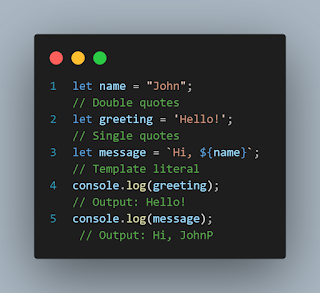JavaScript Data Types: A Comprehensive Guide with Examples
JavaScript is a versatile and dynamic programming language widely used in web development. One of its key features is its flexibility in handling data types, which define the type of data a variable can hold. Understanding JavaScript data types is crucial for writing efficient and error-free code.
This blog will guide you through the 7 primary data types in JavaScript, along with examples to make each concept easy to understand.
1. Number
The Number type is used for numeric values, including integers and floating-point numbers.
Example:
Special Numeric Values:
Infinity-InfinityNaN(Not a Number)
2. String
The String type represents textual data, enclosed in single ('), double ("), or backticks (`).
Example:
3. Boolean
The Boolean type represents logical values: true or false.
Example:
4. Undefined
A variable is undefined when it is declared but not assigned a value.
Example:
5. Null
The null type represents an intentional absence of value or a "nullified" object.
Example:
6. Object
The Object type is a collection of key-value pairs, useful for storing structured data.
Example:
7. Symbol
The Symbol type represents unique identifiers. Every Symbol is unique.
Example:
Dynamic Typing in JavaScript
JavaScript is dynamically typed, meaning variables can hold any data type and change types at runtime.
Example:
Type Checking in JavaScript
You can check a variable's type using the typeof operator.
Example:
Conclusion
JavaScript's data types are the foundation of understanding and working with the language. With practice, recognizing and using these types will become second nature. By mastering them, you’ll write cleaner, more reliable code and tackle any JavaScript challenge with confidence.
Start experimenting today! 💻✨
Let me know your thoughts or questions in the comments below. 😊














Comments
Post a Comment